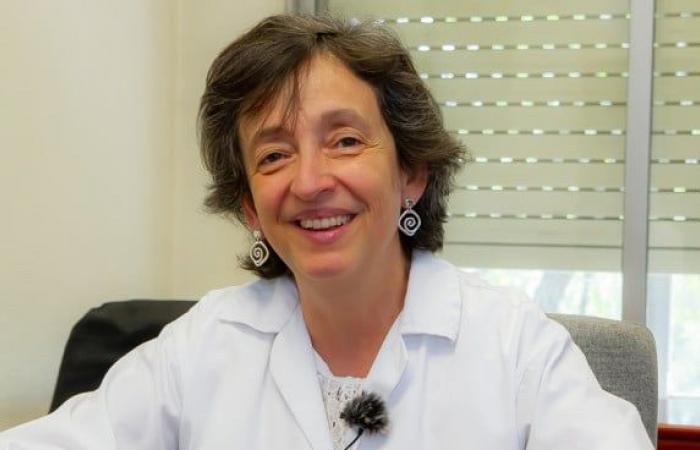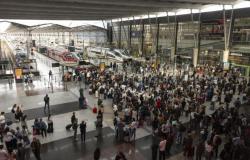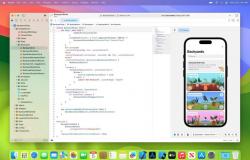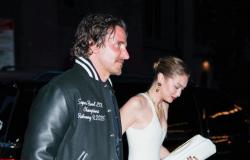Esther Pérez David, cardiologist.
when Esther Pérez David appeared to the MIR exam in 1994, there were no reliable predictions or online platforms that anticipate the results. “The simulators did not go well,” he recalls. Therefore, when the official list was published and saw that had obtained number onethe surprise was total. Three decades later, since his position as a cardiologist at the La Paz University Hospital, he takes stock of his professional tour and reaffirms the choice that marked his career: “I liked internal medicine, but it seemed like a too wide field. Within its branches, within its branches, Cardiology was the most complete and the most effective at that time. And it still is. ”
He is not surprised that Cardiology remains one of the first specialties to run out every year. “It is very gratifying. It has a powerful clinical part, with acute patients who require a lot of competition, but also give many joys. It is technical, versatile and with many work outputs. It is a very complete specialty”, resume.
David developed much of his career at the Gregorio Marañón hospital, where he made the residence and subsequently led the development of the cardiac magnetic resonance program between 2004 and 2020. “It has been one of the more rewarding experiences of my working life. Learn something new, be able to take it to clinical practice, contribute to a service that was already very good. Seeing how a new technique helps patients was very satisfactory. In addition, I was able to train outside, it was A very exciting stage And, in addition, I had a lot of fun, ”he says.
In full pandemic he decided to take a professional turn and joined the La Paz hospital. “I introduced myself to a Management Headquarters. The possibility of developing a new project arose. Peace is a great hospital, and it was a good opportunity to contribute my experience. ”
“A very selective experience”
His training as a resident was marked by a highly competitive environment. “Was A very selective experience. There were very powerful people from the scientific-technical point of view, with a lot of initiative and work capacity. We had many expectations. ”
However, he acknowledges that Teamwork was not so developed Like now. “We depended more on our individual development. We accepted it, but we lacked that ability to work as a team. has improved with younger generationsthat work better in collaboration. ”
He recalls it as an intense stage, loaded with emotions. “When you are a resident everything is new. The intensity is tremendous. There are great joys and great dislikes. But you are also young, and that gives you special energy. Sharing difficult moments with your classmates joins you a lot. I I remember it with a lot of love “.
Competitiveness There were also, although defining it as a Positive motivation. “Of course, the attempt to overcome is a good thing. The challenge was to know how to combine that with teamwork, and that’s where we sometimes stumbled.”
A more difficult look today?
Pérez David does not believe that the MIR exam is more difficult than before, although it does consider it different. “Now It has a more clinical approach. It looks more like the competitions that we are going to have to practice on a day -to -day basis. It is true that it is easier to include clinical images and cases. As to difficulty, I think it’s not too much”, He thinks.
| “The rights and obligations of residents are much better defined today” |
He also considers that the residence has changed. “The rights and obligations of residents are much better defined today. There are more content because knowledge has increased and there are more therapeutic possibilities, especially in acute patients. But the structure is clearer. Residence is now more systematic”.
A subsequent training
With all the advances that the specialty has experienced, the cardiologist believes that the solution does not go through lengthening the residence, but by Better structure posterium formationr. “The residence lasts five years, is long. But there is an obvious need to standardize training in subspecialties, such as cardiac image, electrophysiology or interventionist cardiology. It is something that is being worked on from the Spanish Society of Cardiology together with the institutions. It is a complex project, with many actors, but necessary.”
The specialist insists that it is not about adding more content during the years of residence, but about creating a figure that allows a structured and regulated subsequent training, capable of responding to the Current specialization levels.
The evolution of cardiac image
The field to which he has dedicated a good part of his career has also changed radically. “When I did the residence, what we were doing was electrocardiography and echocardiography. In the last 20 years many techniques such as the Cardiac CT or resonance. Now we work with a Multimodality profile. Although the basic technique remains ultrasound, knowledge has been integrated. ”
In addition, the growing role of artificial intelligence in this area stands out. “Many commercial programs that we use already have integrated algorithms of AI. They work in the background and are often not even aware. They accelerate the acquisition and image processing. They are already changing our clinical practice. ”
Even so, he warns that this technology also raises challenges. “It gives a little vertigo. We do not know to what extent it can make the learning of young people difficult. If they begin to solve all the jobs with AI, will they be able to maintain their skills? We will have to Adapt teaching so as not to lose the quality of learning or creativity. ”
“Be generous”
From her experience as a resident trainer, she launches a clear advice: “What Try to absorb everything they can. They are surrounded by very good people. That they are not limited to technical knowledge, it is also important to observe how patients are treated, how the equipment is related. Teamwork is also learned at this stage”.
And concludes with a message that goes beyond the professional: “That they are generous, They are not afraid to dedicate their energy and enthusiasm. Even if they are tired or overloaded, it is a very rewarding era. Residents provide freshness, critical thinking, illusion. It is an exchange. They give a lot, and we also receive a lot from them. ”
Information published in medical writing contains statements, data and statements from official institutions and health professionals. However, given any questions related to your health, consult your corresponding health specialist.
- -





